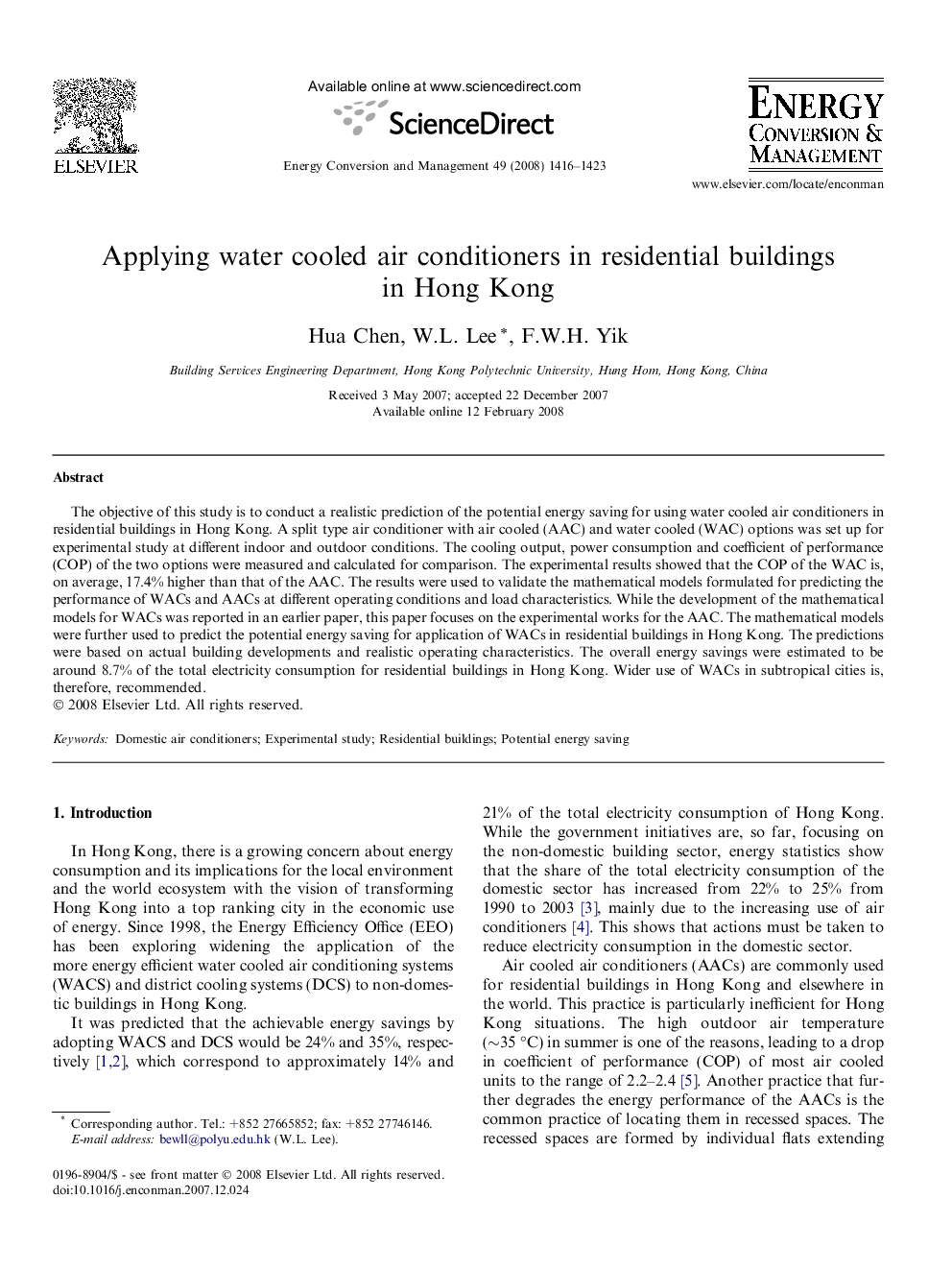| Article ID | Journal | Published Year | Pages | File Type |
|---|---|---|---|---|
| 772778 | Energy Conversion and Management | 2008 | 8 Pages |
The objective of this study is to conduct a realistic prediction of the potential energy saving for using water cooled air conditioners in residential buildings in Hong Kong. A split type air conditioner with air cooled (AAC) and water cooled (WAC) options was set up for experimental study at different indoor and outdoor conditions. The cooling output, power consumption and coefficient of performance (COP) of the two options were measured and calculated for comparison. The experimental results showed that the COP of the WAC is, on average, 17.4% higher than that of the AAC. The results were used to validate the mathematical models formulated for predicting the performance of WACs and AACs at different operating conditions and load characteristics. While the development of the mathematical models for WACs was reported in an earlier paper, this paper focuses on the experimental works for the AAC. The mathematical models were further used to predict the potential energy saving for application of WACs in residential buildings in Hong Kong. The predictions were based on actual building developments and realistic operating characteristics. The overall energy savings were estimated to be around 8.7% of the total electricity consumption for residential buildings in Hong Kong. Wider use of WACs in subtropical cities is, therefore, recommended.
